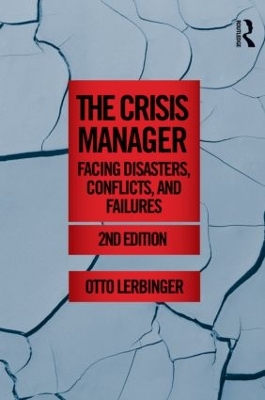Routledge Communication
2 total works
Responding to the era of crises in which we now live, The Crisis Manager offers wise counsel for anticipating and responding to crises as well as taking the steps required to reduce the impact of these events. Spotlighting the reality of crisis at levels ranging from local to global, author Otto Lerbinger helps readers understand the approaches and ways of thinking required for successful crisis management in today’s world. As no organization or individual is immune from crisis, he guides managers to make good decisions under conditions of high uncertainty, and to consider the interests not only of stockholders but also of a wide variety of stakeholders.
With a focus on the threat of crises to an organization’s most valuable asset – its reputation – The Crisis Manager covers:
- Preparation for crisis, including crisis communication planning
- Physical crises – natural, biological, and technological
- "Human climate" crises, stemming from targeted attacks on an organization’s policies, actions, or physical holdings
- Crises due to management failure, including mismanagement, skewed values, deception, and misconduct
New to this second edition are the use of social media in crisis management, and chapters on image restoration strategies and crises stemming from mismanagement, as well as a comprehensive updating of the entire work. Real-world case studies provide examples of what worked and what did not work, and the reasons why.
Written for present and future crisis managers in all types of businesses and organizations, this resource will be required reading for students in public relations, business, and management, as it prepares them for their crucial roles as decision makers.
Divided into five parts, this book:
*provides an overview of the corporate public affairs function;
*explores strategies of the myriad interest groups in the United States, such as labor unions and environmental, consumer, women's, and human rights groups;
*recognizes the media's increasing coverage of business events, especially negative ones, that have tremendous power both to undermine corporate credibility and to support public policy positions;
* deals with legislative, executive, and judicial branches of government; and
*raises the question of how corporate power strategies have affected the political marketplace.
This book will appeal to advanced-level students, scholars, and practitioners in public relations and business fields.

